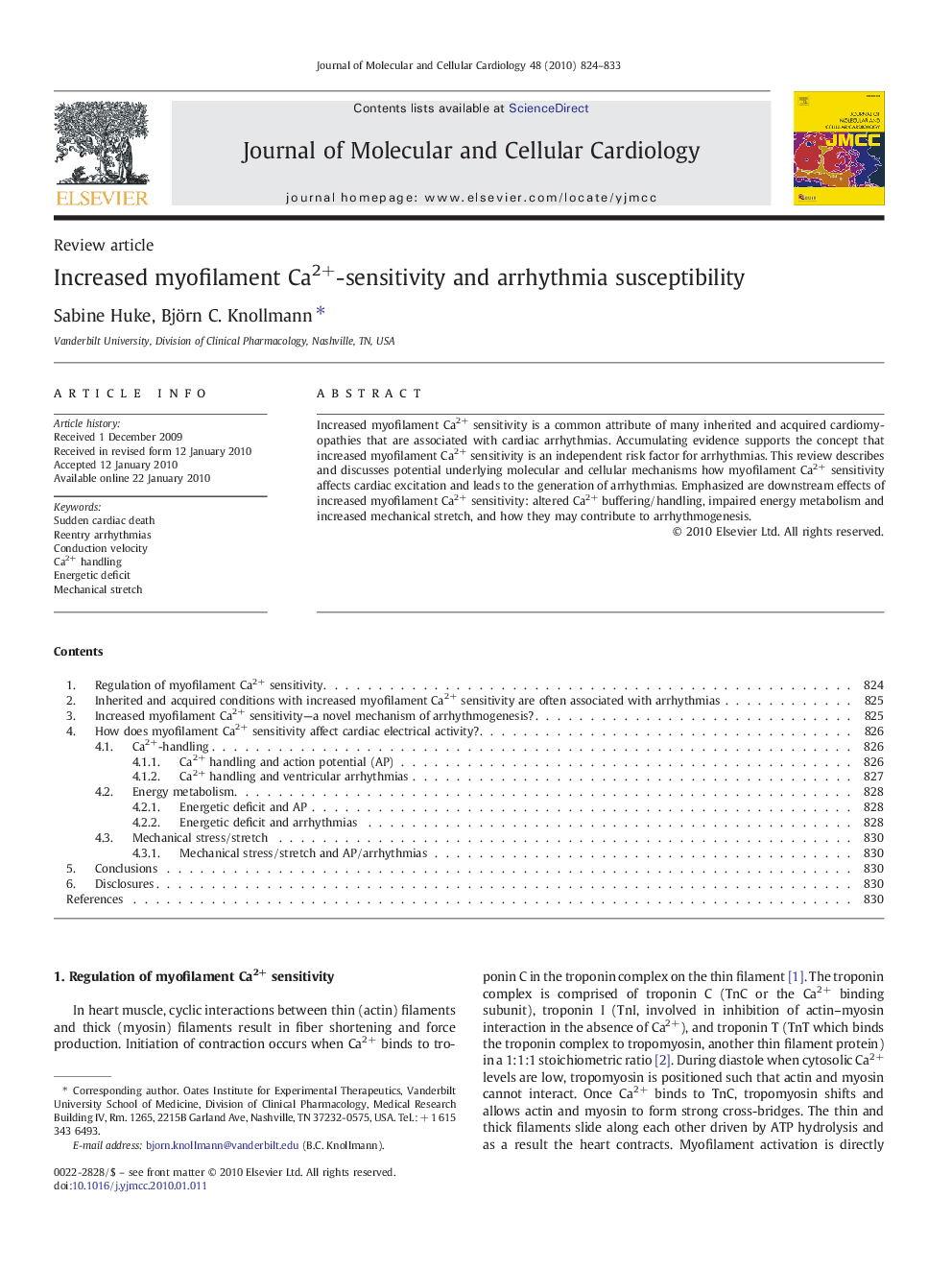| Article ID | Journal | Published Year | Pages | File Type |
|---|---|---|---|---|
| 10954090 | Journal of Molecular and Cellular Cardiology | 2010 | 10 Pages |
Abstract
Increased myofilament Ca2+ sensitivity is a common attribute of many inherited and acquired cardiomyopathies that are associated with cardiac arrhythmias. Accumulating evidence supports the concept that increased myofilament Ca2+ sensitivity is an independent risk factor for arrhythmias. This review describes and discusses potential underlying molecular and cellular mechanisms how myofilament Ca2+ sensitivity affects cardiac excitation and leads to the generation of arrhythmias. Emphasized are downstream effects of increased myofilament Ca2+ sensitivity: altered Ca2+ buffering/handling, impaired energy metabolism and increased mechanical stretch, and how they may contribute to arrhythmogenesis.
Related Topics
Life Sciences
Biochemistry, Genetics and Molecular Biology
Cell Biology
Authors
Sabine Huke, Björn C. Knollmann,
